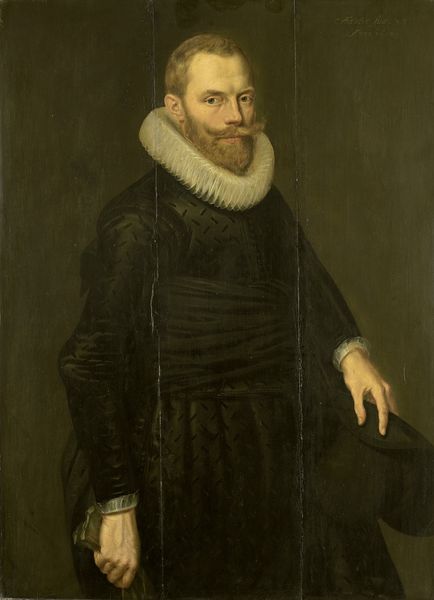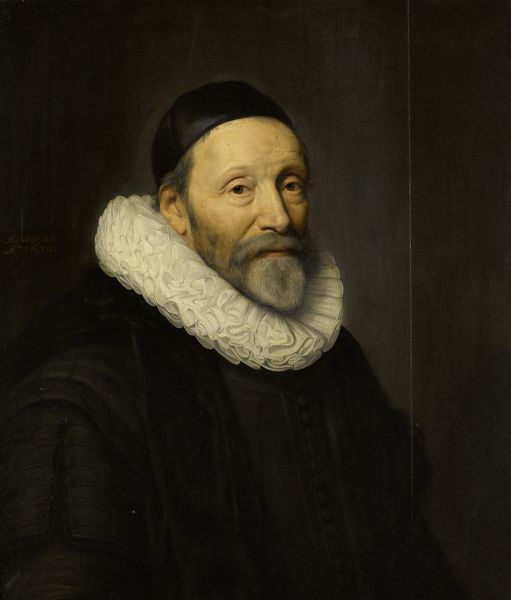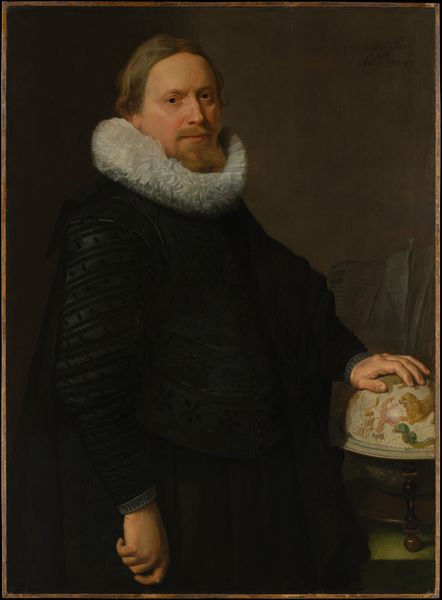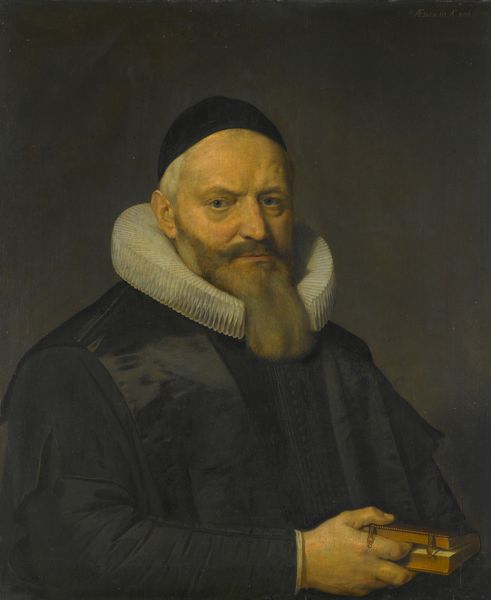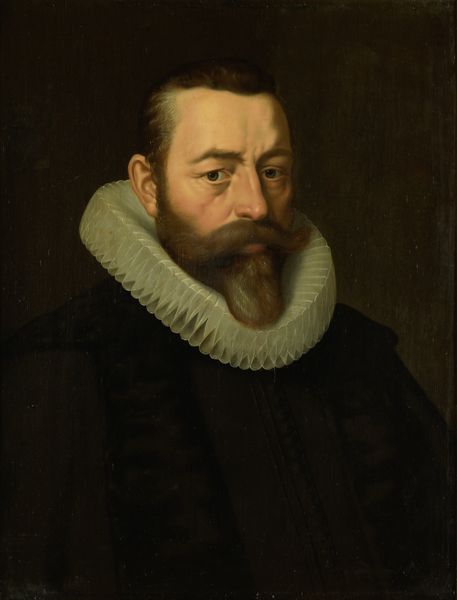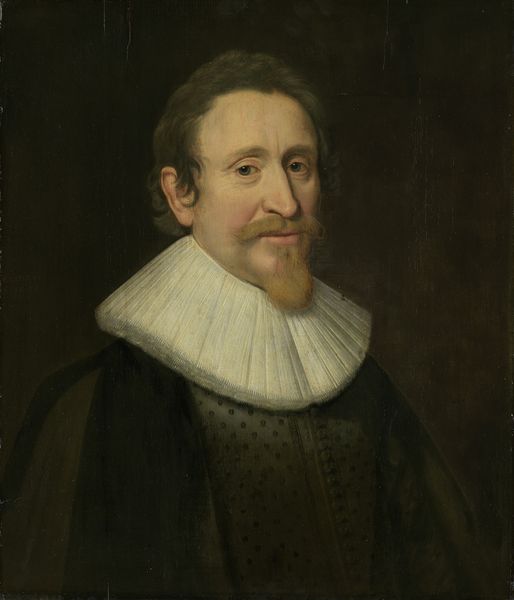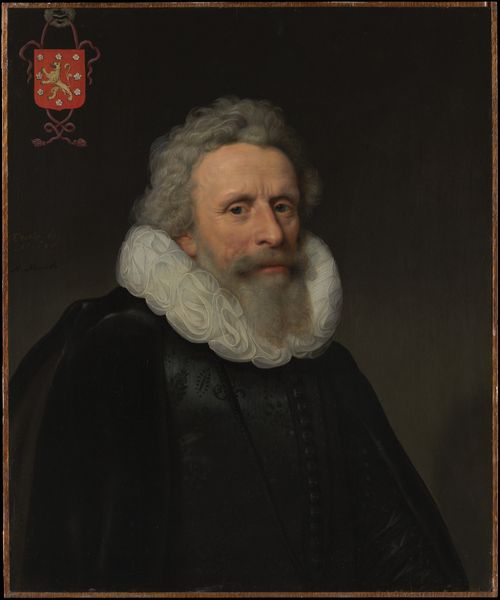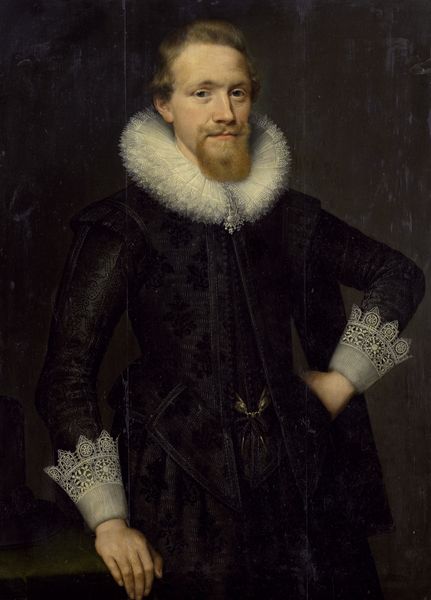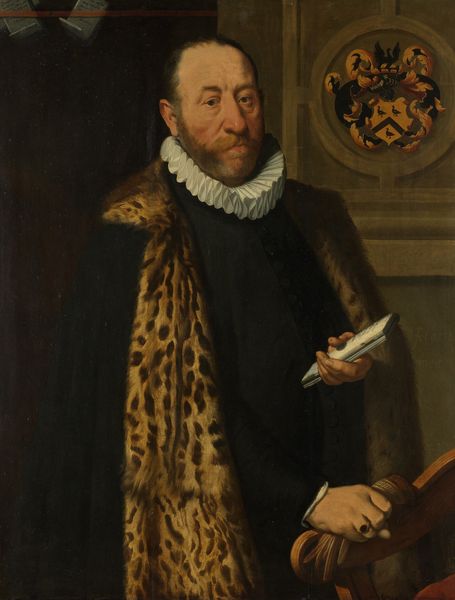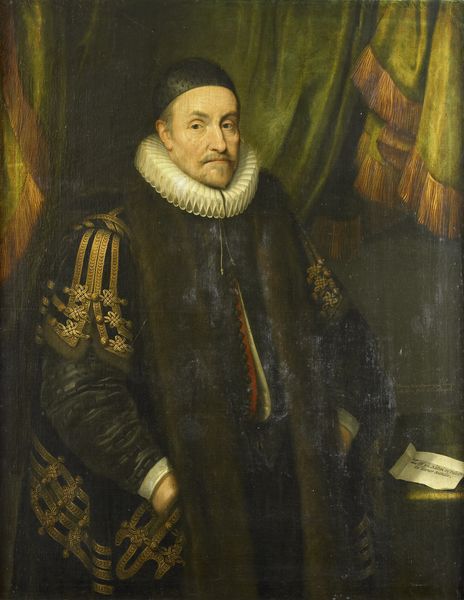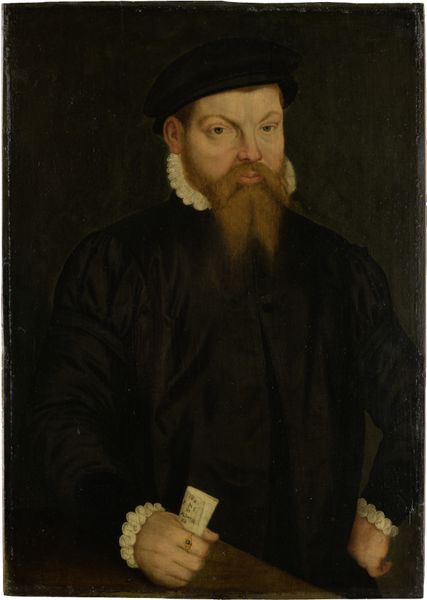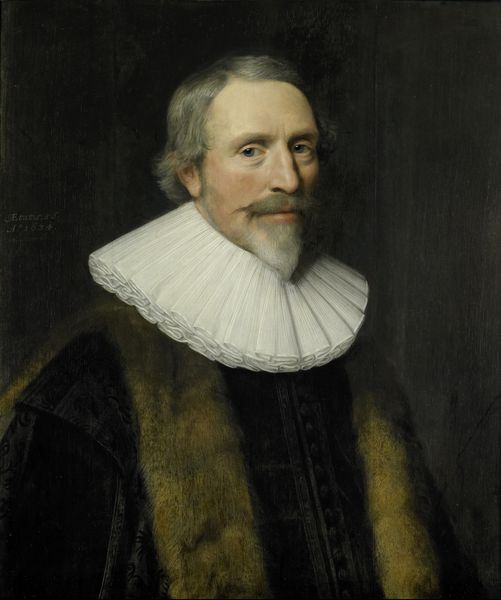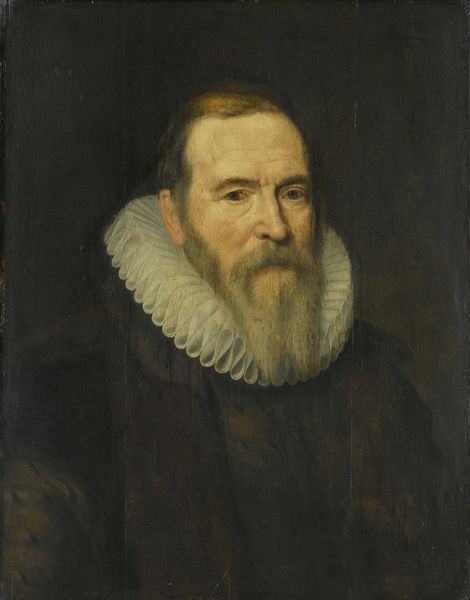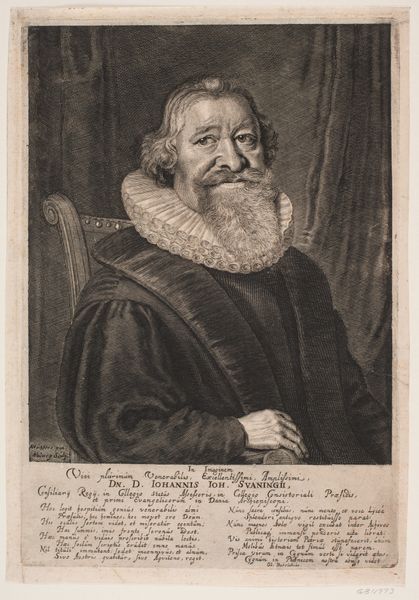
painting, oil-paint
#
portrait
#
baroque
#
dutch-golden-age
#
painting
#
oil-paint
#
history-painting
#
realism
Dimensions: height 88 cm, width 63 cm
Copyright: Rijks Museum: Open Domain
Editor: This is a portrait of Antonius Antonides van der Linden, a physician in Amsterdam. It’s oil on canvas and dates back to 1633. There’s such a formality to it, a seriousness that's almost imposing. What do you see in this piece beyond just a formal portrait? Curator: Well, looking at it through a historical lens, this isn't just a depiction of an individual, but also a statement about the rising status of physicians in Dutch society. Notice how the sitter, while dressed in dark, sober clothing typical of the time, is also adorned with that very elaborate ruff. It’s a symbol of status and learning. The coat of arms reinforces the subject's status as a man of prominence within the city of Amsterdam. How might that connect to public perceptions of medical practitioners during this period? Editor: I hadn’t really thought of it like that. So, it's about more than just showing what someone looked like; it's about presenting them in a way that reflects their social standing. It's like a form of visual propaganda, almost. Curator: Exactly. Consider the historical context: The Dutch Golden Age was a period of tremendous prosperity and intellectual growth. Individuals associated with knowledge, medicine included, became important figures. Paintings like this one served to solidify their importance and prestige within the social structure. Do you think a more informal style would have suited that goal? Editor: Probably not. The formality reinforces that sense of importance. I guess I was focused on the somberness, but it's all working to project a specific image to the public. The museumification, so to speak, begins with the portrait itself. Curator: Precisely! Think of the painting as an artifact embedded within complex historical dynamics, both reflecting and shaping how medicine and its practitioners were viewed. We aren't just viewing an artwork, we are considering the institutional forces in shaping not only medical and scientific prestige, but also artistic conventions around this subject matter. Editor: This really changes how I see portraits from this era. Thanks, I learned a lot. Curator: As did I. Reflecting on these works reminds us to always look beyond the surface, because art reflects the currents of history.
Comments
No comments
Be the first to comment and join the conversation on the ultimate creative platform.
